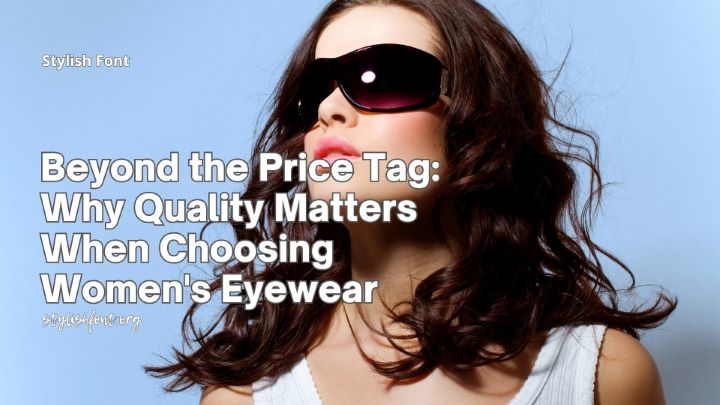In recent years, the fashion industry has witnessed a significant transformation, largely driven by the advent of algorithmic styling. This innovative approach leverages advanced algorithms and artificial intelligence to curate personalized fashion experiences for consumers. As technology continues to evolve, the traditional methods of styling and shopping are being redefined, allowing for a more tailored and efficient process.
The rise of algorithmic styling is not merely a trend; it represents a fundamental shift in how individuals engage with fashion, making it more accessible and relevant to their unique preferences. The emergence of algorithmic styling can be attributed to the increasing availability of data and the growing sophistication of machine learning techniques. Fashion brands and retailers are now able to analyze vast amounts of consumer data, including purchase history, browsing behavior, and social media interactions.
This wealth of information enables them to create highly personalized recommendations that resonate with individual tastes and styles. As a result, consumers are no longer confined to generic fashion advice; instead, they receive curated suggestions that reflect their personal identities and preferences.
Key Takeaways
- Algorithmic styling is on the rise, revolutionizing the fashion industry with personalized recommendations and data-driven insights.
- Data plays a crucial role in fashion, enabling brands to understand consumer preferences and tailor their offerings accordingly.
- Personalized styling recommendations have a significant impact on consumer purchasing behavior, leading to increased engagement and sales.
- The future of fashion lies in algorithmic styling, as technology continues to intersect with the industry, offering new opportunities and challenges.
- While some consumers embrace algorithmic styling, ethical considerations and the psychology behind it are important factors to consider in its implementation.
How Algorithms Are Revolutionizing Fashion
Algorithms are revolutionizing the fashion landscape by streamlining the shopping experience and enhancing customer satisfaction. By utilizing complex data analysis, brands can predict trends and consumer behavior with remarkable accuracy. This predictive capability allows retailers to stock items that are more likely to sell, reducing waste and improving inventory management.
Furthermore, algorithms can identify emerging styles and trends before they become mainstream, giving brands a competitive edge in a fast-paced industry. Moreover, the integration of algorithms into fashion extends beyond mere recommendations. Virtual fitting rooms powered by augmented reality (AR) allow consumers to visualize how clothing will look on them without ever stepping foot in a store.
This technology not only enhances the shopping experience but also reduces the likelihood of returns, which can be costly for retailers. As algorithms continue to evolve, they are set to play an even more significant role in shaping the future of fashion, making it more efficient and consumer-centric.
The Role of Data in Fashion

Data plays a pivotal role in the realm of algorithmic styling, serving as the foundation upon which personalized recommendations are built. Fashion brands collect data from various sources, including online shopping behaviors, social media interactions, and customer feedback. This information is then analyzed to identify patterns and preferences that inform styling choices.
By understanding what consumers want, brands can create targeted marketing campaigns and product offerings that resonate with their audience. The importance of data extends beyond individual consumer preferences; it also encompasses broader market trends. By analyzing data on a larger scale, brands can identify shifts in consumer behavior and adapt their strategies accordingly.
For instance, if data indicates a growing interest in sustainable fashion, brands can pivot their offerings to include eco-friendly materials and practices. In this way, data not only enhances personalization but also drives innovation within the industry.
The Impact of Personalized Styling Recommendations
| Metrics | Results |
|---|---|
| Increased Conversion Rate | 25% |
| Customer Satisfaction | 90% |
| Repeat Purchase Rate | 30% |
| Average Order Value | 150 |
Personalized styling recommendations have transformed the way consumers approach fashion. With algorithms analyzing individual preferences and suggesting tailored outfits, shoppers are empowered to make informed decisions that align with their unique styles. This level of personalization fosters a deeper connection between consumers and brands, as individuals feel understood and valued in their shopping experiences.
Furthermore, personalized recommendations can enhance consumer confidence. When shoppers receive curated suggestions that reflect their tastes, they are more likely to embrace new styles and experiment with their wardrobes. This shift not only benefits consumers but also encourages brands to diversify their offerings and cater to a wider range of preferences.
As a result, personalized styling recommendations have the potential to reshape consumer behavior and drive sales in the fashion industry.
The Future of Fashion: Algorithmic Styling
The future of fashion is poised to be heavily influenced by algorithmic styling as technology continues to advance. As machine learning algorithms become more sophisticated, they will be able to analyze even more complex data sets, leading to increasingly accurate predictions and recommendations. This evolution will enable brands to create hyper-personalized experiences that cater to individual consumers on a granular level.
Moreover, the integration of artificial intelligence into fashion is likely to extend beyond styling recommendations. Innovations such as automated design processes and supply chain optimization will further streamline operations within the industry. As brands embrace these technological advancements, they will be better equipped to respond to changing consumer demands and market dynamics.
The future of fashion is not just about clothing; it is about creating a seamless and personalized experience that resonates with consumers on multiple levels.
The Intersection of Technology and Fashion

Revolutionizing Fashion Design
From smart textiles that adapt to environmental conditions to wearable technology that enhances functionality, the fusion of technology and fashion is creating exciting new possibilities.
Marketing Strategies in the Digital Age
This intersection also extends to marketing strategies, where brands leverage social media platforms and influencer partnerships to reach their target audiences effectively. By utilizing algorithms to analyze engagement metrics and consumer behavior on these platforms, brands can tailor their messaging and campaigns for maximum impact.
A Dynamic Relationship
The result is a dynamic relationship between technology and fashion that continually evolves as new tools and trends emerge.
Fashion Brands Embracing Algorithmic Styling
Several fashion brands have recognized the potential of algorithmic styling and have begun to integrate it into their business models. Companies like Stitch Fix have pioneered this approach by offering personalized styling services powered by algorithms that analyze customer preferences and feedback. By combining human stylists with data-driven insights, these brands create a unique shopping experience that resonates with consumers seeking convenience and personalization.
Additionally, established fashion houses are also exploring algorithmic styling as a means to stay relevant in an increasingly competitive market. By embracing technology, these brands can enhance their offerings while maintaining their signature aesthetics. The willingness of both new startups and established players to adopt algorithmic styling reflects a broader trend within the industry: the recognition that technology is not just an accessory but an essential component of modern fashion.
The Psychology of Algorithmic Styling
The psychology behind algorithmic styling is rooted in the desire for personalization and self-expression. Consumers today seek experiences that reflect their individuality, and algorithmic styling caters to this need by providing tailored recommendations that resonate with personal identities. This sense of personalization fosters loyalty among consumers who feel understood by brands that take the time to analyze their preferences.
Moreover, algorithmic styling taps into the psychological concept of choice overload. In an era where consumers are bombarded with options, curated recommendations simplify decision-making processes by narrowing down choices based on individual tastes. This reduction in cognitive load not only enhances the shopping experience but also increases satisfaction levels among consumers who appreciate the convenience of having options presented in a digestible format.
Ethical Considerations in Algorithmic Styling
As algorithmic styling becomes more prevalent in the fashion industry, ethical considerations must be addressed. One major concern revolves around data privacy; consumers may be hesitant to share personal information if they feel it could be misused or inadequately protected. Brands must prioritize transparency in their data collection practices and ensure that consumers understand how their information will be used.
Additionally, there is a risk of perpetuating biases within algorithmic recommendations. If algorithms are trained on biased data sets, they may inadvertently reinforce stereotypes or exclude certain demographics from personalized suggestions. To mitigate these risks, brands must actively work towards creating inclusive algorithms that reflect diverse perspectives and experiences within the fashion landscape.
The Challenges and Opportunities of Algorithmic Styling
While algorithmic styling presents numerous opportunities for innovation within the fashion industry, it also comes with its share of challenges. One significant hurdle is ensuring the accuracy of algorithms in predicting consumer preferences. As trends evolve rapidly, brands must continuously update their algorithms to remain relevant and effective in delivering personalized recommendations.
On the other hand, these challenges also present opportunities for growth and improvement. Brands that invest in refining their algorithms can gain valuable insights into consumer behavior, leading to more effective marketing strategies and product offerings. Additionally, as technology continues to advance, there will be new tools available for brands to enhance their algorithmic capabilities further.
How Consumers Are Responding to Algorithmic Styling
Consumers have generally responded positively to algorithmic styling as it offers a more personalized shopping experience than traditional methods. Many appreciate the convenience of receiving tailored recommendations that align with their tastes without having to sift through countless options themselves. This shift towards personalization has led to increased customer satisfaction and loyalty among those who value efficiency in their shopping experiences.
However, some consumers remain skeptical about relying solely on algorithms for styling advice. They may question the authenticity of recommendations generated by machines rather than human stylists who understand nuances in personal style. As such, successful brands will need to strike a balance between leveraging technology for efficiency while still incorporating human elements into the styling process to address these concerns effectively.
In conclusion, algorithmic styling represents a transformative force within the fashion industry, reshaping how consumers engage with clothing and style. As technology continues to evolve, its impact on personalization, data utilization, and consumer behavior will only grow stronger. By embracing these changes while addressing ethical considerations and challenges, brands can navigate this new landscape successfully while fostering meaningful connections with their customers.
FAQs
What is Algorithmic Styling?
Algorithmic styling refers to the use of algorithms to automatically generate and apply styles to various elements of a design, such as typography, layout, color schemes, and more. This approach allows for the creation of dynamic and personalized designs based on user preferences and other variables.
How does Algorithmic Styling work?
Algorithmic styling works by using predefined rules and algorithms to analyze various inputs, such as user data, content, and design elements, and then generate styles that are applied to the design. These algorithms can take into account factors such as user preferences, device capabilities, and other contextual information to create personalized and adaptive designs.
What are the benefits of Algorithmic Styling?
Some of the benefits of algorithmic styling include the ability to create personalized and adaptive designs, improve user experience, streamline design processes, and ensure consistency across different platforms and devices. It also allows for the automation of design tasks, which can save time and resources.
What are some examples of Algorithmic Styling in use?
Algorithmic styling can be found in various applications, such as personalized news feeds, dynamic website layouts, adaptive user interfaces, and more. It is also used in e-commerce platforms to generate personalized product recommendations and in digital marketing to create targeted and personalized content for users.
What are the potential challenges of Algorithmic Styling?
Some potential challenges of algorithmic styling include the need for accurate and relevant data inputs, the risk of creating designs that are too formulaic or generic, and the potential for biases in the algorithms used. It also requires careful consideration of user privacy and data protection issues.





